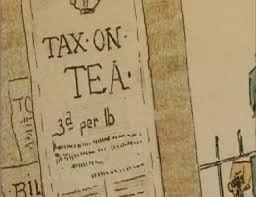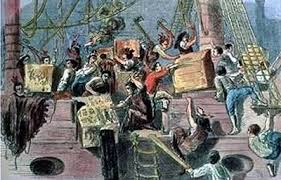Who was Earl Grey?
Earl Grey, the tea, a blend of black Indian tea with bergamot oil, is one of the most popular and beloved teas in the sipping world, with variations limited only by blenders’ imaginations. In addition to green, white or even rooibos, devotees can now find Earl Grey ice cream or even Earl Grey cookies.
Did Earl Grey, the person, inspire the same passion? Or was it just a happy accident that a tea with across-the-board-appeal was named after an Earl with a catchy name? Did the person of Earl Grey leave as lasting a legacy as did the tea named after him?

2nd Earl Grey, painting attributed to Thomas Phillips, about 1820; in the National Portrait Gallery, London. Courtesy of the National Portrait Gallery, London
Charles, the 2nd Earl Grey, and the namesake of the tea, fought his battles in the political arena. Educated at Eton and Cambridge with a wit and elegance to match his debating skills, he was elected to parliament when he was just 22. As a member of the liberal Whig party, Grey opposed the conservative government of William Pitt and was one of the founders of the Society of the Friends of the People in 1792 that encouraged lower and middle class parliamentary reform. His later became First Lord of the Admiralty, Foreign Secretary and leader of the Whigs, but left over opposition to Catholic emancipation. When William IV became king in 1830 (at sixty-five, the oldest to be crowned), Grey became Prime Minister. As a statesman, Grey’s greatest achievement was the passage of the Reform Bill of 1832, which dramatically altered the political landscape by abolishing seats from 56 so-called “rotten boroughs,” creating 22 new ones in cities created by the Industrial Revolution and limiting others to one member. While it was a victory for the middle class, only 650,000 could actually vote out of population of 14 million. Under Grey, other bills abolished slavery and ended the monopoly of the East India Company’s trade with China, some legacy for a tea namesake.
Grey was no less prolific in his private life. In 1794, Grey married Mary Ponsonby, the daughter of a liberal Irish lord. By 1819, the couple had 16 children. Fun sip: One of their daughters was the great-great-great grandmother of Diana, Princess of Wales.
Much less is known about how the tea got its name. One story: Diplomats in China sent Grey a shipment of tea and bergamot oranges and when it arrived after a long sea voyage, the tea absorbed the citrus flavor and voila! Earl Grey tea. Another story: a Chinese mandarin gave Grey the tea in gratitude for Grey’s role in rescuing his son from drowning. The only problem is that Grey never went to China. Cuppa, anybody?
\


